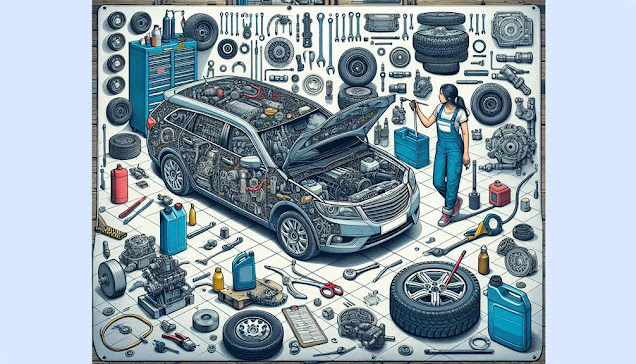Why Tire Rotation is Essential for Effective Auto Service Maintenance
Taking care of your tires is one of the most important steps in ensuring vehicle safety, performance, and durability. Research indicates that nearly 25% of tire-related accidents stem from uneven tread wear, highlighting the importance of consistent maintenance. One vital yet sometimes overlooked service is regular tire rotation. For drivers of Asian vehicles such as Toyota, Honda, Nissan, and Lexus, maintaining balanced tire wear can enhance fuel economy, driving comfort, and vehicle handling. But how often should you rotate your tires, and why does it matter? Let’s explore the key reasons and best practices for this essential maintenance step.
The Value of Tire Rotations
1. Promotes Even Wear Across All TiresTires wear differently depending on their position, your driving habits, and road surfaces. In front-wheel-drive cars, the front tires typically wear faster due to handling more of the braking and steering forces. Rotating tires on a regular basis balances this wear, allowing each tire to last longer and perform better.
2. Improves Driving Control and Balance
Tires with uneven wear can reduce your car’s responsiveness and stability—especially during quick maneuvers or emergency stops. Regular rotations help preserve even tread depth, keeping your Asian vehicle’s performance sharp and reliable.
Tires with uneven wear can reduce your car’s responsiveness and stability—especially during quick maneuvers or emergency stops. Regular rotations help preserve even tread depth, keeping your Asian vehicle’s performance sharp and reliable.
3. Enhances Fuel Economy
When tires wear unevenly, they create resistance that causes your engine to burn more fuel. Having your tires rotated routinely reduces rolling resistance, which in turn boosts fuel efficiency and helps lower long-term operating costs.
When tires wear unevenly, they create resistance that causes your engine to burn more fuel. Having your tires rotated routinely reduces rolling resistance, which in turn boosts fuel efficiency and helps lower long-term operating costs.
4. Increases Overall Tire Lifespan
Purchasing new tires can be expensive, so maximizing their life is a smart move. Regular rotations, ideally every 5,000 to 7,500 miles—or as suggested by Asian manufacturers like Toyota and Honda—can prevent early wear and stretch your investment.
5. Strengthens Road Safety
Properly rotated tires maintain better tread and traction, which is critical for braking performance, hydroplaning resistance, and overall vehicle stability in harsh weather.
Tire Rotation as a Key Element in Auto Service
Making tire rotation part of your standard auto service routine pays off in the long run. Skipping this service can result in faster wear, less predictable handling, and increased fuel consumption. Most service centers provide tire rotation as part of a package that also includes alignment checks and tire pressure inspections—an all-in-one solution to keep your vehicle road-ready.Tire rotation may seem like a small step, but it has a big impact on performance, safety, and cost savings. Stick to a regular schedule—about every 5,000 to 7,500 miles—to ensure even wear, smoother handling, and better fuel mileage. Don’t wait for visible signs of trouble. Book a tire rotation with a trusted auto service provider and keep your Asian vehicle performing at its best every mile of the journey.



Comments
Post a Comment